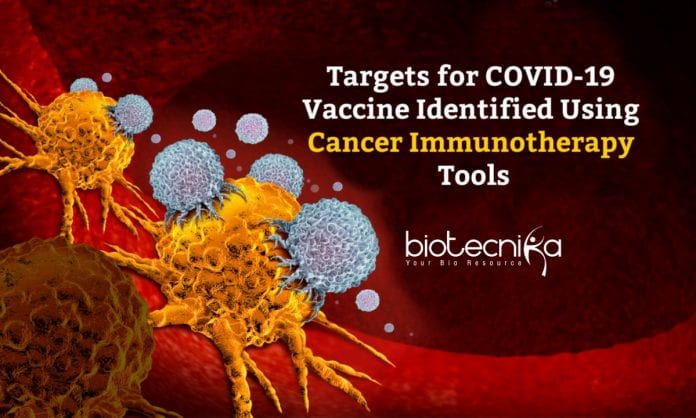COVID-19 Vaccine Targets Using Immunotherapy Tools
Using cancer immunotherapy tools, researchers identify targets for a COVID-19 vaccine.
The strategy of using the tools used for the development of cancer immunotherapies was applied by a team of cancer researchers and they adapted them to identify the ‘right protein sequences to target in the virus that causes coronavirus, SARS-CoV-2. The researchers at Children’s Hospital of Philadelphia (CHOP) believe that using this strategy, a vaccine would drive a long-term immune response and provide protection across the human population.
At CHOP’s Cancer Center, a pediatric oncologist, John M. Maris, MD, the senior author and the Giulio D’Angio Professor of Pediatric Oncology at the Perelman School of Medicine at the University of Pennsylvania said, “We had developed tools to identify unique aspects of childhood cancers that can be targeted with immunotherapies and since cancer behaves like a virus in many ways, we decided to apply those same tools to identify the right protein sequences to target in SARS-CoV-2.”
Maris added, “We can now prioritize viral targets based on their ability to stimulate a lasting immune response, predicted to be in the vast majority of the human population, by adapting the computational tools developed and now
refined by lead author Mark Yarmarkovich, Ph.D. in the Maris Lab. A roadmap for a vaccine that would be both safe and effective and could be produced at scale could be provided through this approach.”An effective vaccine against SARS-CoV-2 must be an optimally designed vaccine that minimizing adverse reactions, autoimmunity, or disease exacerbation and maximizes a long-lasting immune response.
The team gave more importance in identifying regions of the virus to target to increase the likelihood that a vaccine is both safe and effective. The team looked for regions that when paired with the right B cells, would stimulate a memory T-cell response that would drive memory B cell formation and provide majority of human genomes with lasting immunity.
The regions of SARS-CoV-2 that are present across multiple related coronaviruses, along with new mutations that increase infectivity, were targeted by the researchers, and to maximize safety, they also made sure that those regions were as dissimilar as possible from sequences naturally occurring in humans.
The peptide sequences that offer the greatest probability of providing population-scale immunity were considered and a list of 65 such peptide sequences was proposed. To assess their effectiveness and safety, the team is testing many combinations of a dozen or so of these sequences in mouse models as the next step.
Dr. Yarmarkovich said that the coronaviruses will continue to threaten the human population as we have now witnessed the third epidemic in the past two decades, all originating from the coronavirus family, thus, the need for prophylactic measures against future outbreaks must be necessitated.
He also added saying that if their approach is successful, it could offer protection against other coronaviruses that might emerge in the future and not just SARS-CoV-2 as a subset of the sequences selected in their study are derived from viral regions that are very similar to other coronaviruses.
Source
COVID-19 Vaccine Targets Using Immunotherapy Tools



























